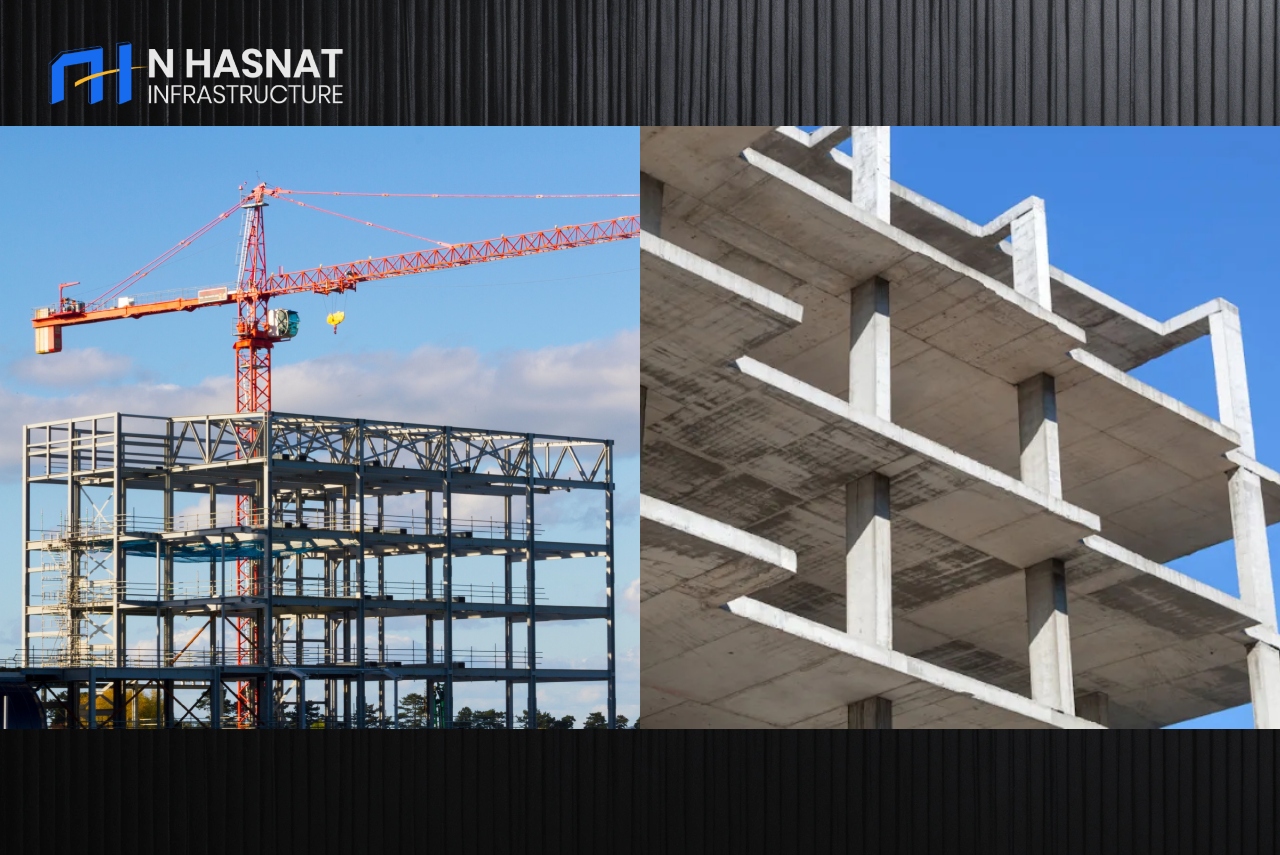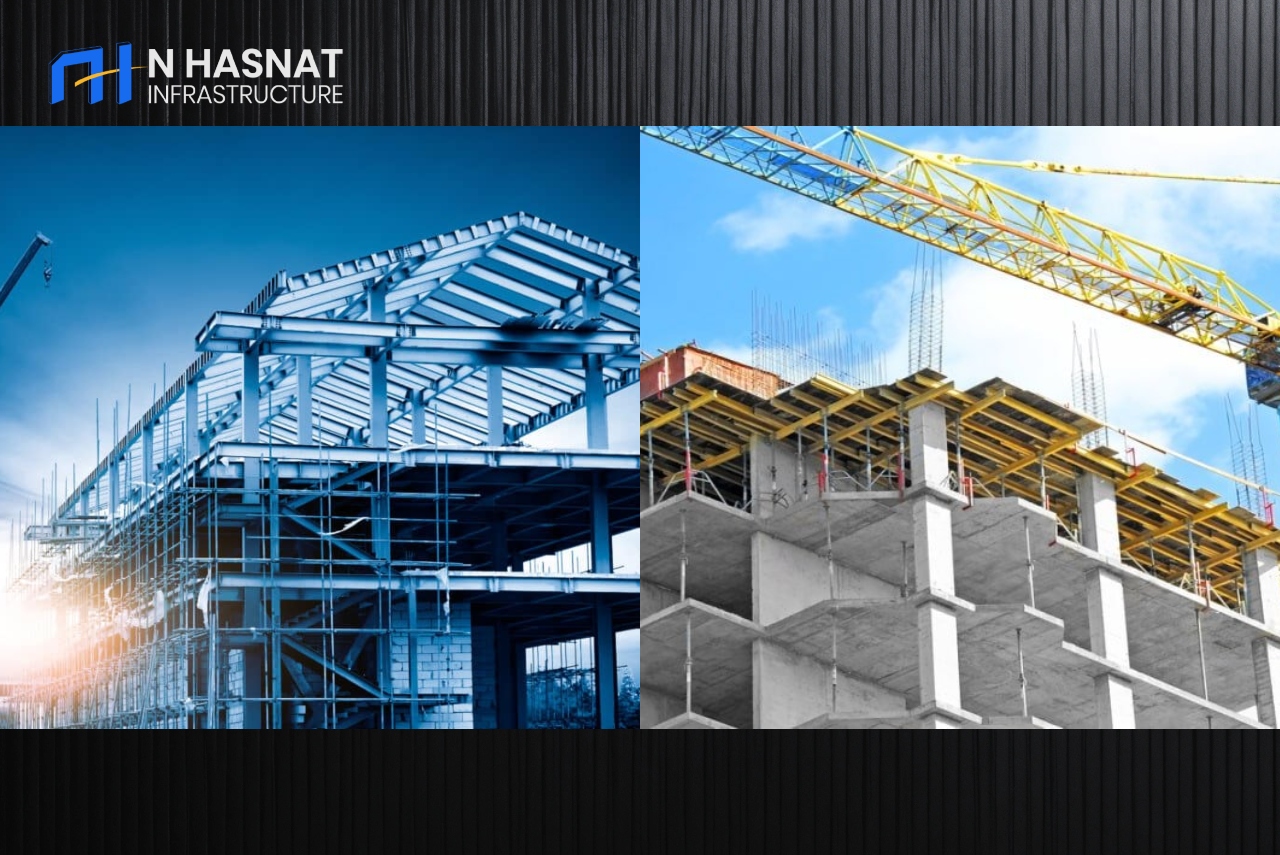
◈ Steel Vs. Concrete: A Comparative Analysis Of Building Materials
When it comes to constructing buildings and infrastructure, two materials have stood the test of time: steel and concrete. Each has its own unique properties, advantages, and disadvantages. In this article, we will delve into a comparative analysis of these two building materials, exploring their strengths, weaknesses, and the scenarios in which one might be preferred over the other.
Strength and Durability
Steel: The Strength of Versatility
Steel is renowned for its exceptional strength and versatility. It boasts a high tensile strength, making it ideal for structures that require long spans and minimal support columns. This strength-to-weight ratio allows architects to design sleek, modern buildings with open floor plans.
One of the key advantages of steel is its durability. It is highly resistant to corrosion, especially when coated with protective materials like galvanization. This makes steel a preferred choice in areas with harsh environmental conditions, such as coastal regions.
Concrete: The Durability of Endurance
Concrete, on the other hand, is known for its endurance. While it might not match steel's tensile strength, it compensates with impressive compressive strength. This makes it perfect for load-bearing structures, like bridges and foundations.
Concrete structures can endure for centuries if properly maintained. It is resistant to fire, which is a crucial safety consideration in many building projects. However, concrete is susceptible to cracking over time, which can reduce its longevity if not addressed promptly.
Cost and Efficiency
Steel: Swift Construction but at a Price
Steel structures are often faster to construct compared to their concrete counterparts. The components are pre-fabricated, reducing on-site construction time. However, the upfront cost of steel is typically higher than that of concrete. This is partly due to the cost of the material itself and the skilled labor required for steel fabrication and welding.
Concrete: Cost-Effective and Long-Term Savings
Concrete may have a longer construction timeline, as it requires curing time. However, it often proves to be more cost-effective in the long run due to its durability and low maintenance requirements. The raw materials for concrete, such as sand, gravel, and cement, are generally less expensive than steel. Moreover, concrete has good thermal mass properties, helping reduce heating and cooling costs over time.
Environmental Impact
Steel: Energy-Intensive Production
The production of steel involves high energy consumption and significant carbon emissions. Mining, refining, and manufacturing steel are resource-intensive processes. However, steel is 100% recyclable, which mitigates its environmental impact. Recycled steel retains its properties, making it an eco-friendly option.
Concrete: A Cement Conundrum
Concrete's primary environmental concern is the production of cement, which is one of its main components. Cement production releases substantial amounts of carbon dioxide, a major contributor to global warming. However, advancements in eco-friendly cement formulations and recycling of concrete waste have begun to alleviate these concerns.

Architectural Flexibility
Steel: The Modern Marvel
Steel's strength and malleability allow architects to push the boundaries of design. It can create structures with large, open spaces and intricate designs. Steel's slender profiles enable architects to design strikingly modern and aesthetically pleasing buildings.
Concrete: The Timeless Classic
Concrete has a timeless quality that has been used in construction for centuries. It can be molded into various shapes and finishes, allowing for a wide range of architectural styles. Many iconic structures, such as the Pantheon in Rome, showcase concrete's enduring appeal.
Conclusion
Both steel and concrete have their unique attributes, making them suitable for different construction scenarios. The choice between them often depends on factors like project requirements, budget constraints, and environmental considerations. In some cases, a combination of both materials, known as composite construction, is employed to leverage their respective strengths.
To make an informed decision, architects,
engineers, and builders must carefully evaluate the specific needs of their
projects. In the ever-evolving field of construction, both steel and concrete
continue to play pivotal roles in shaping the world's built environment. By
understanding their strengths and limitations, we can create structures that
are not only functional but also sustainable and aesthetically pleasing.
For further information on steel and concrete in construction, consider exploring these external resources:
- American Institute of Steel Construction
- Concrete Reinforcing Steel Institute
These organizations provide valuable insights, research, and guidelines for utilizing steel and concrete effectively in various construction projects.
